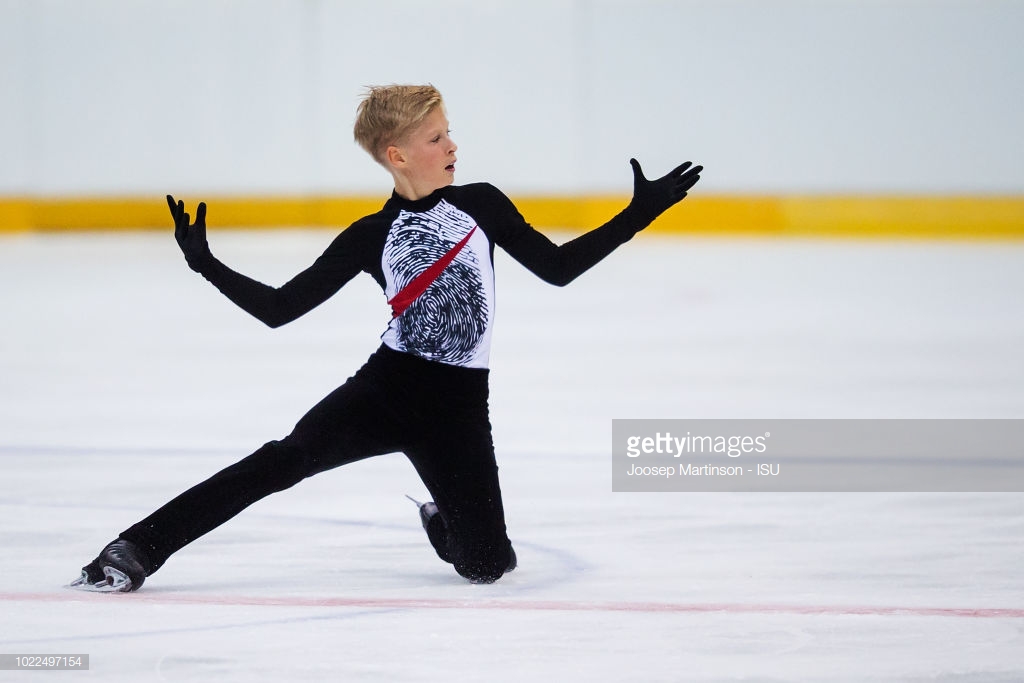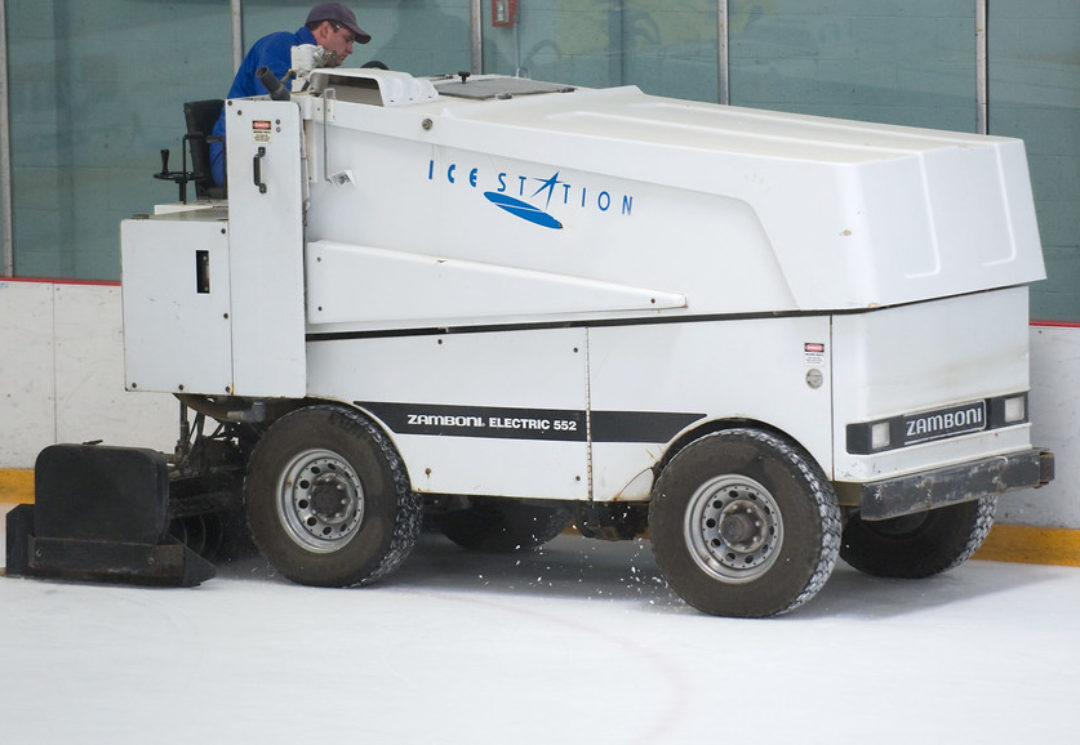
Like pumpkin spice, figure skating really does start earlier every year. It’s barely September, but we’re already a month into a new season and a new Olympic cycle, and I had a pumpkin muffin for breakfast the other day. Among figure skating fans, the Junior Grand Prix series holds a special place in our hearts, not only because it begins in August when the ice feels shiny and new, but because the events stream for free on YouTube and are hosted by Ted Barton, the Mr. Rogers of sports. The JGP is a cynicism-free zone. Here are 12 moments that melted my bitter heart and reminded me that figure skating is magic.
Stephen Gogolev, JGP Bratislava Free Skate
I’m glad Gogolev was assigned to the first JGP of the season, because I’m not sure Canada could have waited any longer to see how their most promising prodigy since Patrick Chan would hold up on international ice. He wasn’t perfect, but he was so much better than everyone else that I can hardly remember the other two medalists’ free skates. (They were, in fact, great; Mitsuki Sumoto, in particular, would have been a revelation in any other company.) The usual dubious copyright claims mean that only a fancam version of Gogolev’s performance is available on YouTube, and that’s to our benefit: from this angle, it’s easier to see how high and how powerful Gogolev’s two quads at the top of the program are. While he still has some work to do in terms of expression and connection to the music – and he’s 13 years old, so give it time – Gogolev exudes confidence and determination. He makes you want him to win, which is good, because we’re going to see him win a lot over the next fifteen years or so.
Nadiia Bashynska & Peter Beaumont, JGP Bratislava Free Dance
Is this here because of the costume change? Well, I’m not saying it isn’t. But this team’s promise runs deeper than a gimmick. Bashynska and Beaumont are a new team who represent Canada even though both of them come from countries with shallower dance fields (and spottier funding). They only came in ninth overall, after an error-burdened rhythm dance set them far behind the pack. They were fifth in the free dance, though, and might have been even higher if the judges had rewarded them more appropriately on the components side for their expressive performance quality, easygoing chemistry, and challenging transitions. It’s hard to keep a Cinderella program from feeling childish, but they’ve found an age-appropriate way into the story. They’ve found their way to high levels and grades of execution on their lifts and twizzles, too.
Elizaveta Khudaiberdieva & Nikita Nazarov, JGP Bratislava Free Dance
It’s time for us all to learn to spell “Khudaiberdieva,” because she’s a star in the making. Russia’s promising junior ice dancers have mostly fizzled in the transition to the highest level, but this team is polished and mature enough that they already look poised to ascend. A lot of the credit for that potential should go to Nazarov, whose steady partnering skills and perfect lines disappear behind Khudaiberdieva’s dazzle. They’re more than the sum of their parts, though, especially in their ability to transition smoothly between elements, tucking their technical content into the music and narrative. This program has the makings of a trainwreck – it splices together two pop songs on the verge of warhorse status, with some odd cuts – but Khudaiberdieva and Nazarov commit to the story it tells, and make it feel fresh.
Yi Christy Leung, JGP Bratislava Free Skate
I love seeing skaters from smaller countries break through as juniors, because it’s a sign we’ll be seeing them compete internationally for years to come. Leung’s impressive and unexpected fourth-place finish in Bratislava is a sign that she’s on her way to becoming the first great ladies’ skater to represent Hong Kong. Her triple lutz-triple toe loop combination is money in the bank, especially if she continues to execute it with the height and finesse she showed here. She’s also heeded my call for someone to skate to Florence and the Machine, and she interprets her music with the verve of a moody fifteen-year-old who feels orchestral drama-pop deep in her soul. She doesn’t have the judges on board with those feelings yet – low components scores were the sole factor that kept her off the podium – but if she keeps showing up like this, she’ll win them over in time to make history at Four Continents.
Anna Shcherbakova, JGP Bratislava Free Skate
It’s tempting to dismiss Shcherbakova as another Russian tween who will disappear as soon as puberty strikes, but I would love to see her survive the Hunger Games of Russian ladies’ skating. Unlike most athletes her age, Shcherbakova is a natural performer with a keen sense of music. Her free skate is well choreographed to begin with; musical highlights correspond with transitional touches like the leap into her flying combination spin and the catch-foot spiral out of her triple salchow. But it takes a keen mental game for a 14-year-old to draw attention to the relationship between movement and music, and Shcherbakova does it every time. Plenty of young Russian ladies can launch a triple flip-triple loop, but Shcherbakova is one of the few who can make you feel something while she does it.
Sofia Shevchenko & Igor Eremenko, JGP Linz Rhythm Dance
The original/short/rhythm dance is often a “fake it ’til you make it” situation: teams have to embrace and embody a style whether it suits them or not. Russians Shevchenko and Eremenko will bypass that challenge, because they were born to tango. They seem to settle naturally into the various tango holds, maintaining their unison and physical closeness as well as intense eye contact throughout. This isn’t a technically dazzling program, but that’s because Shevchenko and Eremenko never break character to show off. Let other teams use the rhythm dance as a showcase for lifts or twizzles; Shevchenko and Eremenko are too busy melting each other with their stares.
Conrad Orzel, JGP Linz Short Program
Every skating fan has a type, and I’ll admit I’m weak for men skating sensitively to guitar ballads. But I’m also more critical about this kind of program as it becomes more common, and therefore more prone to thoughtless choreography. Orzel and his coaches were wise to employ fellow Canadian Jeffrey Buttle – a pioneer of the adorably heartfelt short program – to make this fresh and unique. But the triumph is all Orzel’s. He’s the one landing three perfect jumping passes, and using his long limbs to extend the check-outs for days. And he’s the one translating this potentially anodyne Shaun Mendes anthem into an emotional narrative that’s both personal and universal.
Laiken Lockley & Keenan Prochnow, JGP Linz Short Program
So far, the Junior Grand Prix pairs events have been dominated by technically adept but interchangeable Russians. It’s a relief and a pleasure to see a junior pairs team relate to their music and to each other, and even more so when they’re an American team who got their jumps in a row for one stunning short program. Lockley and Prochnow showed off their share of wow moments, including a sky-high triple twist. However, the technical standout was their step sequence. They were the only team to earn a level 4 for their steps in Linz, a well-deserved reward for skating so fast and close together that it was practically ice dance. Lockley sunk into her final pose with a sassy wink, not yet ready to break character.
Koshiro Shimada, JGP Linz Free Skate
When summer snapshots of Shimada reached the internet, fans let out a collective gasp. Shimada has been quietly ascending the Japanese junior ranks for a few years, but seemingly overnight, he’d transformed from a darling little peanut into a lanky young man. His free skate this season capitalizes on that physical and mental growth, with an Astor Piazzolla tango that provides ample opportunities to smolder as well as moments of sweetness. Shimada couldn’t keep up with Camden Pulkinen’s maturity as a performer, and their difference in components scores rightly gave the win to Pulkinen. But Shimada earned the highest technical score of the day, besting not only the gold medalist, but three guys who attempted quads. His two custard-smooth triple Axels, the highlights of a nearly flawless program, saw to that.
Marjorie Lajoie & Zachary Lagha, JGP Linz Free Dance
Many young ice dancers have been accused of co-opting the lyrical style that has brought success to a certain French team, but none have done so as effectively as Lajoie and Lagha. Their ability to transform a curiously underused classical piece into an engaging and emotion-packed narrative isn’t the only reason that Lajoie and Lagha are the most promising Canadian dance team in years, though. With an error-free performance, they would have won handily. They did more than enough for silver here, even with a timing snafu that left them sliding across the ice after their music had ended and an invalidated choreographic step sequence (I’ve received no official word on why – the collective best guess is that it was an ice coverage issue). And the triumphs more than outweigh the struggles, especially when it comes to their rotational lift, which looks like a kitchen appliance possessed with the most graceful spirit of dance.
Haein Lee, JGP Linz Free Skate
The generation of South Korean girls dreaming of becoming the next Yuna has come of age, or at least gotten old enough for JGP eligibility. I hadn’t heard much about Lee, who placed only 9th at Nationals and has been generally overshadowed by showier talents. But in her junior international debut, she showed herself to be a star in the making. There’s a pleasurable springiness to her jumps, and the huge triple lutz and triple flip late in the program suggest that she has more than enough muscle to fix the rotation problems that cropped up elsewhere, and which might have been the factor that kept her just off the podium in Linz. I’m also in the strange position of adoring this program despite the fact that the choreography and Lee’s performance couldn’t have less to do with the plot of West Side Story. Sometimes, there’s no shame in taking music you like and constructing a whole new narrative around it – an artistic strategy that I will choose to believe was intentional, because Lee’s charm was so infectious.
Alena Kostornaia, JGP Linz Free Skate
There’s so much to say about Kostornaia. She’s a standout artistic and technical talent even by Russian standards, and all I can make out from the notes I took in real time was that my caps lock key appeared to be stuck. So let’s just discuss her triple loop. Of the six basic jump types, the loop lends itself most readily to creative transitions. It is also a beast to perfect, with its simple outside edge takeoff, and a landing that returns to the same edge, ideally continuing the curve as smoothly as if you never left the ice. It’s hard to imagine a more difficult way to enter a loop than by gliding half the length of the rink on a left forward outside Y-spiral, turning while still on your left foot, switching to the right while maintaining your edge, and taking off. And then staying on your landing leg to do a counter turn, somehow gaining speed in the process. One of the judges had the sense and taste to give Kostornaia a perfect +5 grade of execution for the element. I can’t imagine how a jump could be better.
Next on The Finer Sports: possibly some more JGP coverage, possibly some off-topic stuff. Hopefully both!
